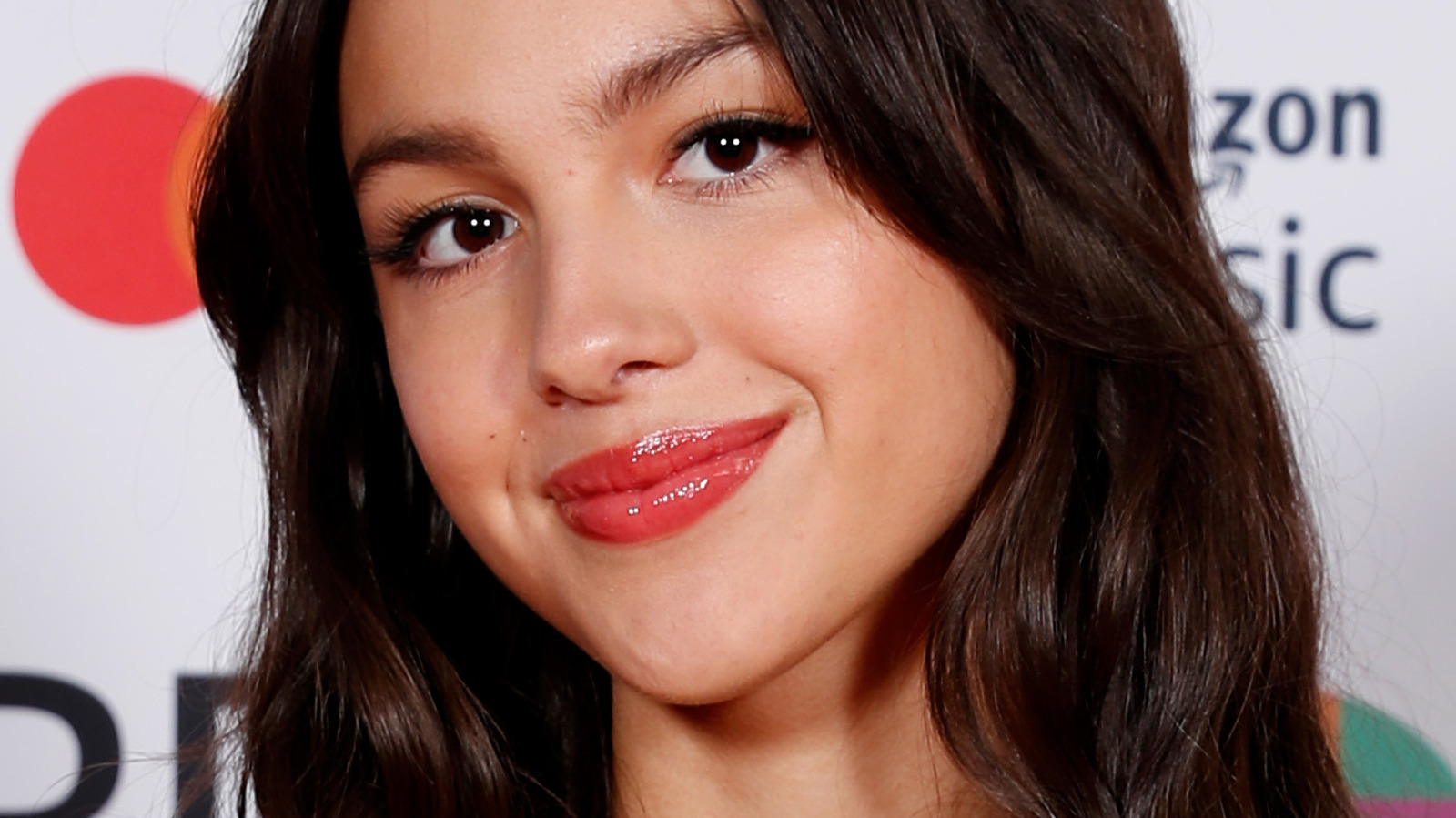Let’s cut straight to the chase, folks. Olivia Rodrigo deep fake has become a buzzword that’s taking over the internet faster than you can say "Vampire Weekend." If you’ve been scrolling through social media lately, chances are you’ve come across some bizarre videos or images that look eerily realistic but are actually fake. And guess who’s at the center of this digital storm? Yup, it’s Olivia Rodrigo, the queen of Gen Z heartbreak anthems. But what’s the deal with these deep fakes? Is it harmless fun or a serious issue we need to address?
Deep fakes have been around for a while now, but they’ve recently exploded in popularity, especially when it comes to celebrities like Olivia Rodrigo. With her massive fanbase and viral hits like "Drivers License," it’s no surprise that she’s become a target for creators who want to push the boundaries of what’s possible with AI technology. But let’s not forget, behind every viral video is a real person with feelings, and that’s where things get complicated.
So, why should you care? Well, if you’re someone who spends a lot of time online, you’ve probably noticed how easy it is for misinformation to spread. And when it comes to deep fakes, the line between reality and fiction becomes dangerously blurred. In this article, we’ll dive deep into the world of Olivia Rodrigo deep fake, exploring what it is, why it matters, and what we can do about it. Buckle up, because it’s gonna be a wild ride.
Read also:Eevie Aspen Leaked The Untold Story You Need To Know
What Exactly Are Deep Fakes?
Alright, let’s break it down. Deep fakes are essentially videos or images that have been manipulated using AI technology to make it look like someone is saying or doing something they didn’t actually do. Think of it like digital cosplay, but instead of dressing up as your favorite character, you’re creating a digital version of someone else. And let’s be real, when it comes to celebrities like Olivia Rodrigo, the possibilities are endless.
But here’s the kicker: deep fakes aren’t just harmless fun. They can be used for malicious purposes, like spreading misinformation, creating fake news, or even cyberbullying. And when it comes to someone as beloved as Olivia Rodrigo, the potential for harm is huge. So, while it might seem like a cool tech trick, it’s important to remember the real-world consequences.
How Do Deep Fakes Work?
Let me explain it to you like this: imagine you’re building a LEGO set, but instead of using your hands, you’re using a super-smart robot. That’s kind of how deep fakes work. AI algorithms analyze thousands of images and videos of a person, learning how they move, speak, and express themselves. Then, they use that data to create a digital clone that can be manipulated to say or do anything.
It’s a pretty wild concept, right? And while the technology itself isn’t inherently bad, it’s how people choose to use it that can cause problems. For example, a deep fake of Olivia Rodrigo singing a new song might seem harmless, but what if someone creates a video of her saying something controversial or offensive? Suddenly, it’s not just about entertainment anymore.
Olivia Rodrigo: A Quick Bio
Before we dive deeper into the world of deep fakes, let’s take a moment to appreciate the woman at the center of all this chaos. Olivia Rodrigo is more than just a pop star; she’s a cultural phenomenon who’s taken the world by storm. Born on February 20, 2003, in Temecula, California, Olivia started her career as an actress on Disney Channel’s "Bizaardvark" before skyrocketing to fame with her debut single "Drivers License."
Key Facts About Olivia Rodrigo
| Full Name | Olivia Christine Rodrigo |
|---|---|
| Date of Birth | February 20, 2003 |
| Place of Birth | Temecula, California, USA |
| Occupation | Singer, Songwriter, Actress |
| Breakthrough Hit | "Drivers License" (2021) |
| Debut Album | "SOUR" (2021) |
Olivia’s journey from Disney star to global sensation is nothing short of impressive. Her music resonates with millions of fans around the world, and her ability to write raw, emotional lyrics has earned her a reputation as one of the most authentic voices of her generation. But with great success comes great responsibility, and unfortunately, that includes dealing with things like deep fakes.
Read also:Rileymaelewis Onlyfans Leaks The Truth Behind The Headlines
Why Are Deep Fakes a Big Deal?
Let’s talk about the elephant in the room: why are deep fakes such a huge issue? For starters, they have the power to manipulate public perception and spread false information. Imagine if someone created a deep fake of Olivia Rodrigo endorsing a political candidate or making a controversial statement. It could have real-world consequences, affecting not just her career but also the lives of her fans.
And let’s not forget the psychological impact. Being a public figure is hard enough as it is, but having your image manipulated and used without your consent can be incredibly damaging. Olivia Rodrigo has been incredibly open about her struggles with mental health, and it’s heartbreaking to think about how something like a deep fake could affect her well-being.
The Legal Side of Deep Fakes
Now, here’s where things get tricky. In many countries, there aren’t clear laws or regulations surrounding deep fakes, which means creators can pretty much do whatever they want without facing consequences. But that’s starting to change. More and more people are recognizing the dangers of deep fakes, and lawmakers are beginning to take action.
For example, some countries have introduced legislation that makes it illegal to create or distribute deep fakes without consent. And while it’s a step in the right direction, there’s still a long way to go. Until we have comprehensive laws in place, creators like Olivia Rodrigo will continue to be vulnerable to misuse of their image.
How to Spot a Deep Fake
Okay, so now you know what deep fakes are and why they’re a problem. But how do you actually spot one? Here are a few tips to help you identify a deep fake:
- Look for inconsistencies in facial expressions or body movements.
- Check for unnatural blinking or lighting effects.
- Listen carefully to the audio. Does it match the video perfectly?
- Research the source. Is it a reputable outlet or a random account?
It’s not always easy to tell, especially with the advancements in AI technology. But by staying vigilant and educating yourself, you can help prevent the spread of misinformation.
Tools to Detect Deep Fakes
Thankfully, there are tools out there that can help you detect deep fakes. Companies like Deeptrace and Sensity are developing software that uses AI to analyze videos and images, identifying signs of manipulation. While these tools aren’t foolproof, they’re a step in the right direction.
And let’s not forget the power of human intuition. Sometimes, your gut feeling can be just as effective as any fancy software. If something seems off or too good to be true, it probably is.
The Impact on Celebrities
Olivia Rodrigo isn’t the only celebrity who’s been targeted by deep fakes. In fact, it’s become a growing problem for public figures across the globe. From politicians to actors, no one is immune to the reach of AI technology. But what makes it particularly concerning for someone like Olivia is the fact that her fanbase is largely made up of young people who might not fully understand the implications.
And let’s be real, being a teenager is hard enough as it is. Imagine being bombarded with fake videos of your favorite celebrity saying or doing things that aren’t true. It can be confusing, distressing, and even harmful. That’s why it’s so important for creators and platforms to take responsibility and ensure that deep fakes don’t become the norm.
The Role of Social Media Platforms
Social media platforms have a crucial role to play in combating the spread of deep fakes. Companies like Facebook, Twitter, and TikTok have started implementing policies to remove deep fake content, but there’s still a lot of work to be done. It’s not just about removing the content; it’s about educating users and creating a culture of accountability.
And let’s not forget the power of community. When fans come together to call out fake content and support their favorite celebrities, it sends a powerful message. Olivia Rodrigo’s fans, affectionately known as "Vibes," have shown time and time again that they’re a force to be reckoned with. By standing up against deep fakes, they’re helping to protect not just Olivia, but the entire online community.
What Can We Do About It?
So, what can we do to combat the rise of deep fakes? Here are a few ideas:
- Spread awareness. Talk to your friends and family about the dangers of deep fakes.
- Support legislation that protects public figures from misuse of their image.
- Use tools and software to detect deep fakes and report them to the appropriate platforms.
- Encourage transparency and accountability in the tech industry.
It’s not just about protecting celebrities like Olivia Rodrigo; it’s about creating a safer, more ethical online environment for everyone. By working together, we can help ensure that deep fakes don’t become the norm.
The Future of AI and Deep Fakes
As AI technology continues to evolve, the possibilities for deep fakes will only expand. But that doesn’t mean we have to sit back and watch it happen. By staying informed, advocating for change, and supporting those who are affected, we can help shape the future of digital media.
And let’s not forget the power of creativity. While deep fakes can be used for malicious purposes, they can also be used for good. Imagine a world where AI is used to create educational content, preserve historical figures, or even bring people together through art. The possibilities are endless, but it’s up to us to decide how we want to use this powerful technology.
Conclusion
So, there you have it, folks. Olivia Rodrigo deep fake might seem like just another internet trend, but it’s so much more than that. It’s a reflection of the challenges we face in a rapidly evolving digital world. By understanding the implications and taking action, we can help protect not just Olivia, but everyone who’s affected by this phenomenon.
Here’s a quick recap of what we’ve covered:
- Deep fakes are videos or images manipulated using AI technology.
- They can be used for malicious purposes, like spreading misinformation or cyberbullying.
- Olivia Rodrigo is just one of many celebrities who’ve been targeted by deep fakes.
- There are tools and resources available to help detect and combat deep fakes.
- We all have a role to play in creating a safer, more ethical online environment.
Now, it’s your turn. What do you think about the world of deep fakes? Have you come across any suspicious content online? Leave a comment below and let’s keep the conversation going. And if you found this article helpful, don’t forget to share it with your friends. Together, we can make a difference.
Table of Contents
- Olivia Rodrigo Deep Fake: The Untold Truth Behind Viral Videos and Online Chaos
- What Exactly Are Deep Fakes?
- How Do Deep Fakes Work?
- Olivia Rodrigo: A Quick Bio
- Key Facts About Olivia Rodrigo
- Why Are Deep Fakes a Big Deal?
- The Legal Side of Deep Fakes
- How to Spot a Deep Fake
- Tools to Detect Deep Fakes
- The Impact on Celebrities
- The Role of Social Media Platforms
- What Can We Do About It?
- The Future of AI and Deep Fakes


